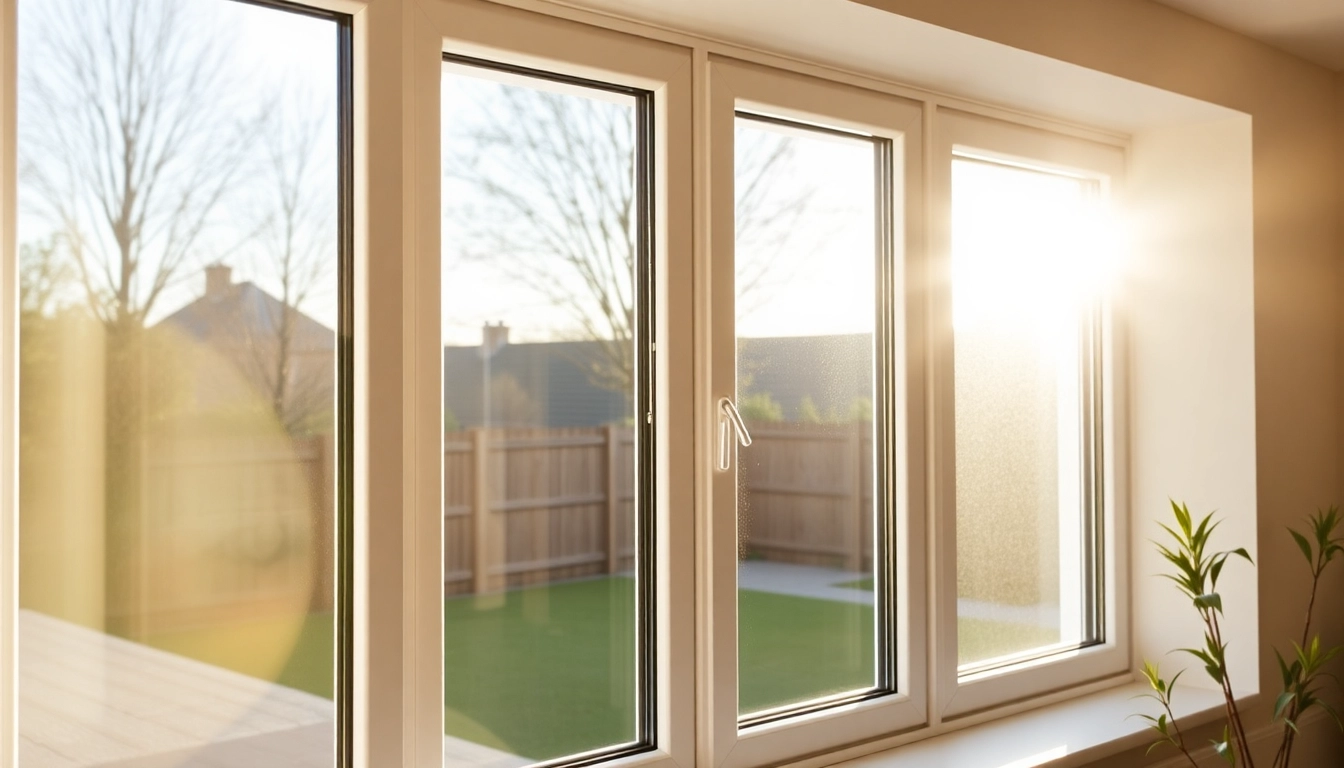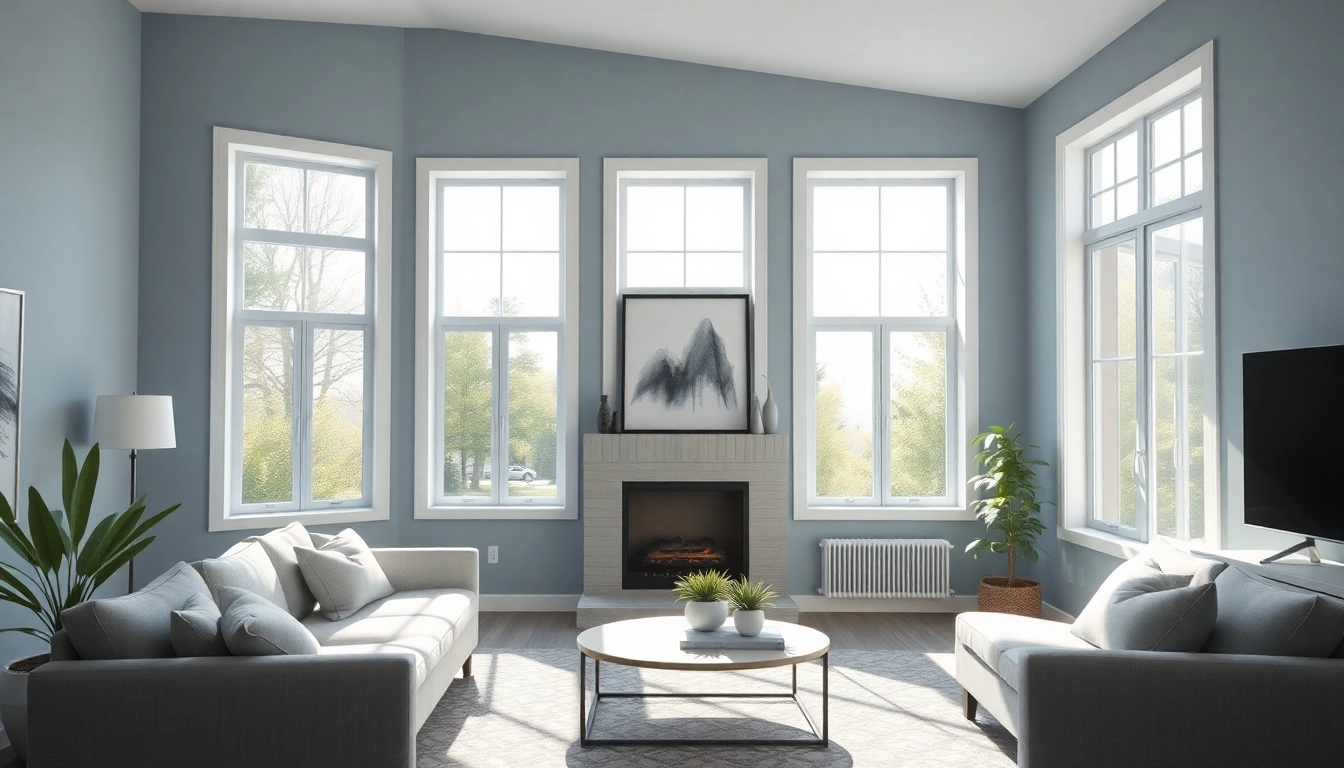Understanding the Benefits of Energy-efficient Sash Windows
In an era where energy conservation and sustainability are at the forefront of home improvement priorities, upgrading to energy-efficient sash windows offers an excellent combination of aesthetic appeal, historical respect, and performance benefits. These traditional-looking windows, renowned for their classic charm and functionality, can now be optimized to meet modern standards of thermal efficiency. This comprehensive guide explores how energy-efficient sash windows can elevate your property’s comfort, reduce energy costs, and contribute to a more sustainable future. For those considering renovation or new installations, understanding their advantages, key features, and best practices is essential to making informed decisions. Energy-efficient sash windows are not merely a design choice but a smart investment in your property’s long-term value and ecological footprint.
Thermal Performance and Cost Savings
One of the primary motivations for upgrading to energy-efficient sash windows is the significant improvement in thermal performance. Traditional single-glazed sash windows, while charming, often contribute to considerable heat loss. Modern innovations, however, enable these windows to deliver superior insulation, leading to lower heating bills and enhanced indoor comfort. According to industry data, high-quality double or even triple-glazed sash windows can reduce heat transfer significantly, with some products achieving thermal transmittance (U-values) as low as 0.8 W/m²K or better.
These efficiency gains translate into substantial cost savings over the lifespan of the windows. A typical homeowner may see a reduction of around 20-30% in annual heating costs, depending on the existing building’s insulation levels and climate zone. Moreover, the enhanced thermal performance contributes to a more stable indoor temperature, reducing cold spots and draftiness.
Beyond individual comfort and savings, energy-efficient sash windows also play a role in broader energy conservation efforts, reducing the demand on local energy grids and lowering carbon emissions. This dual benefit of economic and environmental impact makes them an attractive choice for eco-conscious homeowners.
Environmental Impact and Sustainability
Upgrading to energy-efficient sash windows aligns with environmentally sustainable practices. Modern sash windows use advanced glazing and framing technologies that minimize energy wastage. Timber, often a preferred material for sash windows due to its natural insulation properties, can be sourced responsibly, reinforcing a sustainable approach to renovation.
Furthermore, incorporating triple or high-performance double glazing with Low-E coatings can reflect heat back into the home, reducing heating needs. This not only lowers greenhouse gas emissions but also promotes a more sustainable utilization of resources.
Many manufacturers now prioritize eco-friendly production processes, using sustainable timber, recyclable materials, and low-emission manufacturing techniques. Choosing these options supports a circular economy and adds to the long-term sustainability benefits of the installation.
Design Compatibility with Heritage Properties
One of the key challenges when replacing traditional sash windows in heritage or listed buildings is maintaining aesthetic integrity while enhancing performance. Fortunately, advances in design and technology have enabled manufacturers to produce energy-efficient sash windows that are visually indistinguishable from original fittings.
Customization options include traditional flush sashes, period-appropriate hardware, and finishes that match historic profiles. Such designs ensure compliance with conservation guidelines while providing the thermal benefits of modern technology. As a result, homeowners and preservationists can enjoy the best of both worlds—authentic aesthetics and enhanced energy efficiency.
For example, specialist manufacturers develop timber sash windows with narrow sightlines and minimal frames, preserving the character of the building. In addition, advanced glazing units can be installed within existing or new sash frames without compromising architectural integrity.
Key Features of Energy-efficient Sash Windows
High-Quality Glazing Options: Double and Triple Glazing
The cornerstone of sash window energy efficiency is the glazing. Double-glazed units contain two panes of glass separated by a sealed air or gas-filled space—commonly argon or krypton—which significantly reduces heat transfer by conduction and convection. Modern triple-glazed units take this a step further, providing even better insulative properties.
Low-Emissivity (Low-E) coatings are often applied to the glass surface to reflect infrared heat back into the room while still allowing visible light to pass through. This coating enhances the overall thermal performance, especially during colder months.
When selecting glazing, consider the specific climate, building orientation, and window usage to optimize performance. Quality sealed units should be installed with precision to avoid issues such as condensation or seal failure over time.
Sealed Frames and Draughtproofing Techniques
Even with high-quality glazing, air leaks around the sash window frame undermine efficiency. Modern sash windows incorporate sealed frames with advanced weatherstripping and draughtproofing techniques, dramatically reducing heat loss and unwanted noise infiltration.
Draughtproofing can involve applying weatherstrips, sealing gaps with foam or silicone-based compounds, and installing brush seals along sashes. In some cases, secondary glazing—a thin, removable pane installed within the existing sash—can significantly enhance insulation without altering the original structure.
Proper installation is critical. Skilled professionals utilize precision sealing processes to ensure longevity and effectiveness, as poorly fitted draughtproofing can negate the benefits of high-performance glazing.
Insulation Materials and Frame Construction
The choice of materials for the sash window frame plays a vital role in overall energy performance. Timber remains the most respected choice due to its excellent natural insulating properties and aesthetic compatibility with traditional architecture. Modern treatments and coatings also extend timber durability and weather resistance.
Alternatively, composite frames combine timber with uPVC or aluminum elements, offering low maintenance and high insulation ratings. These materials often feature thermally broken constructions—insulating barriers within the frame to prevent heat transfer.
Overall, well-insulated frames reduce thermal bridging—areas where heat bypasses insulation—and contribute to the window’s overall energy performance.
Choosing the Right Energy-efficient Sash Windows for Your Home
Material Options: uPVC, Timber, and Composite
Selecting the appropriate material depends on aesthetic preferences, maintenance considerations, budget, and conservation requirements. Each material offers distinct advantages:
- Timber: Natural insulation, traditional look, environmentally friendly if sourced responsibly, though requiring regular maintenance.
- uPVC: Low maintenance, high durability, cost-effective, with several energy-rated options achieving A+ ratings.
- Composite: Combines timber’s aesthetics with uPVC or aluminum’s durability and low-maintenance benefits, offering excellent thermal performance.
Evaluate your property’s style and longevity plans to make the best choice. For heritage properties, timber or custom-designed replicas ensure authenticity, while modern developments may benefit from uPVC or composite options.
Energy Ratings and Certifications to Consider
Just as appliances carry energy labels, windows also have ratings that help evaluate their performance. The British Standard (BS EN 14351-1) and the BFRC (British Fenestration Rating Council) provide standardized ratings, with ‘A’ or ‘A+’ ratings indicating superior energy efficiency.
When shopping for sash windows, look for certifications and ratings that affirm the unit’s thermal insulation, weather tightness, and durability. High ratings typically correlate with better materials, airtight construction, and advanced glazing.
Certifications are also vital for compliance with building and conservation regulations, especially in listed buildings.
Customization and Aesthetic Features
Energy-efficient sash windows do not sacrifice visual appeal. Today’s options include a variety of customization features:
- Traditional hardware and decorative sashes
- Various colour finishes and wood stains
- Custom glazing patterns and styles
- Period-appropriate hardware reproductions
Customization ensures seamless integration into the architectural style of your home while maximizing energy performance.
Installation and Maintenance Tips for Optimal Performance
Professional Installation Best Practices
Correct installation is essential to realize the full benefits of energy-efficient sash windows. Professionals follow precise procedures, including proper fitting, sealing, and aligning sashes to ensure airtightness and ease of operation. Skilled installers are familiar with conservation requirements and use compatible materials to prevent damage.
A high-quality installation may involve secondary measures like reinforcing existing frames or adding additional insulation layers, which only seasoned experts can perform effectively.
Regular Maintenance to Preserve Efficiency
To maintain peak performance, scheduled maintenance is vital. Regularly inspect for signs of wear on weatherstripping, hardware, and sealants. Replacing worn seals or lubricating moving parts keeps sashes operating smoothly and maintains airtightness.
Periodic repainting or coating protects timber frames from weather-related damage, preventing deterioration that could impair insulation or cause leaks.
Additional Measures: Window Films and Secondary Glazing
Supplementary measures can further enhance the energy efficiency of sash windows. Installing window films—a transparent, insulating laminate—can reflect heat back into the room and reduce ultraviolet penetration. Such films are inexpensive, easy to apply, and reversible.
Secondary glazing, involving fitting an additional pane inside the existing sash frame, provides an extra layer of insulation without replacing the original window. This solution is particularly popular in conservation areas where maintaining external appearance is crucial.
Future Trends and Innovations in Sash Window Energy Efficiency
Smart Technologies and Automated Insulation
The future of sash windows involves integrating smart technologies. Automated window sensors can detect temperature fluctuations and open or close sash windows for natural ventilation, minimizing energy use for heating and cooling.
Smart insulating materials, such as phase-change gels embedded within glazing, can adapt their properties based on temperature, providing dynamic thermal regulation.
Advanced Glazing Technologies and Coatings
Innovations in glazing include electrochromic glass, which can change tint electronically to control solar gain and glare. Nano-coatings with hydrophobic and anti-reflective properties are also under development to improve durability and performance.
Integration with Home Energy Systems
The synergy between sash windows and integrated home energy systems, such as smart thermostats and energy management platforms, will create holistic solutions for energy conservation. Sash windows can be equipped with sensors and actuators to optimize airflow and thermal performance in real-time.



